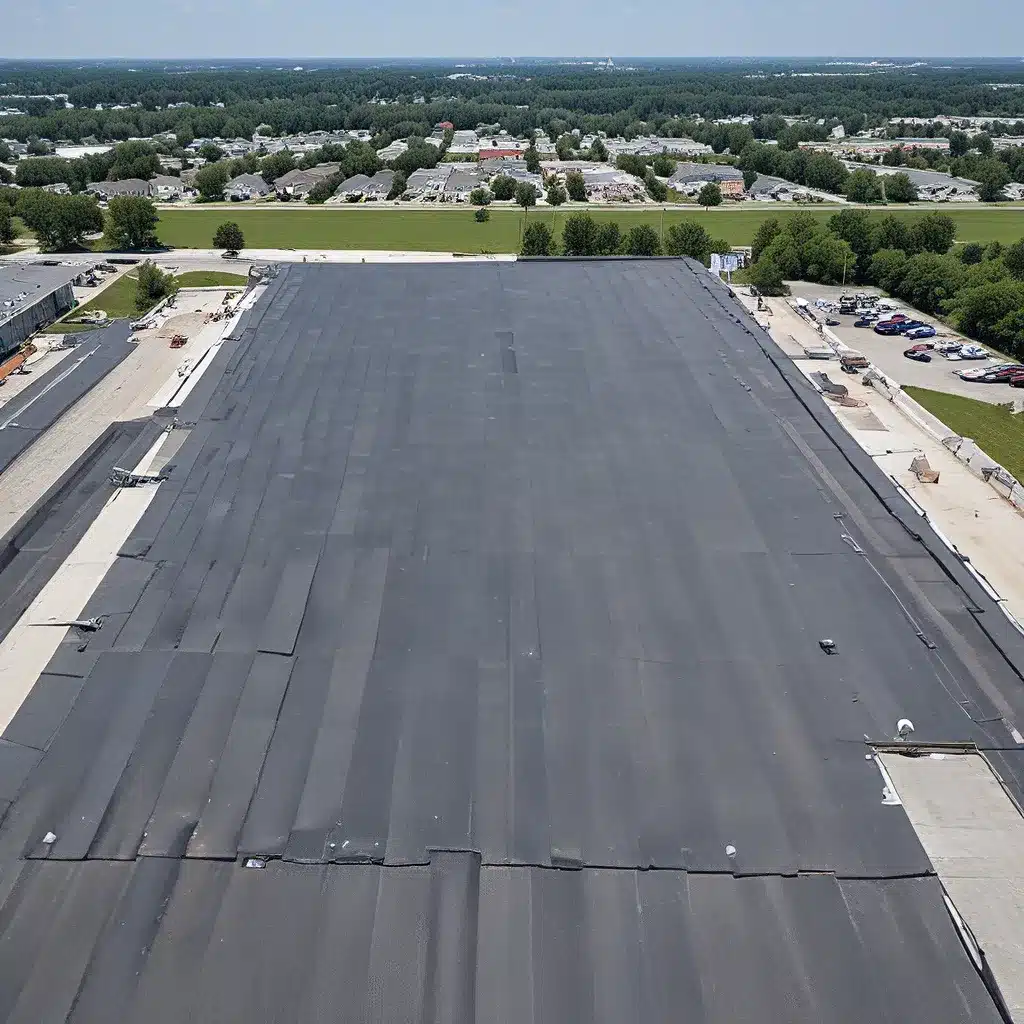
As a roofing enthusiast, I’ve always been fascinated by the incredible impact commercial roofing can have on a building’s energy efficiency and sustainability. It’s not just about keeping the rain and snow out – modern roofing solutions can make a real difference in cutting costs and reducing your environmental footprint. And let me tell you, some of the innovations happening in this space are pretty darn exciting.
The Power of Reflective Roof Coatings
One of the most effective ways to boost energy efficiency in commercial buildings is through the use of reflective roof coatings. These specialized sealants and coatings, like the ones offered by Southern Roofing Company, work like a charm by reflecting heat and sunlight away from the building’s surface.
Imagine your roof as a giant mirror – instead of soaking up all that radiant energy and transferring it inside, the reflective coating bounces it right back where it came from. This significantly reduces the building’s cooling load, allowing the HVAC system to work less and consume less energy. And we all know what that means – lower utility bills and a smaller carbon footprint. Win-win!
The Science Behind the Savings
The science behind reflective roof coatings is pretty straightforward. These innovative products are designed to have a high solar reflectance and thermal emittance, which essentially means they’re exceptionally good at bouncing sunlight and heat away from the building.
KARNAK’s rubber roof sealants, for example, create a protective barrier that reflects heat and UV rays, reducing energy consumption and extending the roof’s lifespan. Their silicone-based sealants also offer superior waterproofing, ensuring your building stays dry and your HVAC system doesn’t have to work overtime to maintain a comfortable temperature.
But it’s not just about the reflective properties – the durability of these coatings is also a game-changer. By forming a seamless, waterproof membrane, they shield the underlying roofing materials from the elements, preventing costly leaks, water damage, and premature deterioration. This means your roof can keep performing at its best for years to come, minimizing the need for frequent repairs or replacements.
Choosing the Right Roofing Solution
When it comes to maximizing energy efficiency in commercial buildings, not all roofing systems are created equal. Metal roofs, for instance, are known for their high reflectivity and can be further enhanced with reflective coatings. Single-ply membranes, like TPO and PVC, also excel at bouncing sunlight away, making them a smart choice for warm climates where cooling costs are a major concern.
But the options don’t stop there. Green roofs covered in vegetation provide excellent insulation and can even help manage stormwater runoff, all while reducing the urban heat island effect. And for those looking to take their sustainability game to the next level, integrated solar panels can generate renewable energy right on the roof, further offsetting a building’s energy consumption.
The key is to work with a knowledgeable commercial roofing contractor, like the team at Southern Roofing Company, who can assess your building’s unique needs and recommend the most energy-efficient roofing solution. They’ll consider factors like your climate, energy goals, and budget to ensure you get the best bang for your buck.
Maintaining the Efficiency Edge
Of course, even the most advanced roofing systems won’t perform at their best without proper maintenance. Regular inspections and timely repairs are crucial to keeping your energy-efficient roof in tip-top shape.
KARNAK’s experts recommend scheduling annual checks to identify any areas of wear or damage, and reapplying sealant every 5-10 years to maintain that all-important reflective barrier. Proper cleaning and preparation before reapplication is key to ensuring optimal adhesion and long-lasting performance.
By staying on top of your roof’s maintenance, you can ensure that your investment in energy-efficient roofing continues to pay dividends for years to come. Imagine the satisfaction of seeing your utility bills go down while your building’s sustainability cred goes up!
The Ripple Effect of Energy-Efficient Roofing
But the benefits of energy-efficient commercial roofing go beyond just cost savings and environmental impact. Improved indoor comfort is another major perk, as these roofing solutions help regulate temperature and humidity levels, creating a more pleasant atmosphere for building occupants.
And let’s not forget the long-term value that energy-efficient roofing can bring to a commercial property. By extending the lifespan of the roof and reducing maintenance needs, you’re not just saving money in the short term – you’re also protecting your investment and making your building more attractive to future tenants or potential buyers.
As I dig deeper into this topic, I can’t help but feel a sense of excitement about the direction the commercial roofing industry is headed. With advancements in materials, coatings, and installation techniques, the possibilities for enhancing energy efficiency and sustainability are truly endless.
The Future of Commercial Roofing
Who knows what the future holds? Maybe we’ll see even more innovative solutions, like self-cleaning coatings that keep your roof looking fresh, or adaptive insulation that adjusts to changing weather conditions. Or perhaps the integration of smart sensors and IoT technology will allow for real-time monitoring and optimization of a building’s energy performance.
One thing’s for sure – the race to decarbonize the built environment is on, and commercial roofing is poised to play a crucial role. As building owners and managers become increasingly conscious of their environmental impact, the demand for energy-efficient roofing solutions will only continue to grow.
So, if you’re a commercial property owner or manager, I’d encourage you to keep a close eye on the latest developments in this space. Explore the options, talk to the experts, and see how you can future-proof your building with a cutting-edge roofing system. After all, the savings and sustainability benefits are just too good to ignore.